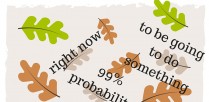What do dogs, horses and light bulbs have in common? They are “countable nouns.” This infographic explores countable and uncountable nouns.
To download high resolution A3 poster click here, here and here.
Countable Nouns
Most nouns offer few problems when counting them.
3 cowboys
120 cows
2 chuck wagons
When exact numbers are not known, use “many” and “few.” These are called “quantifiers.”
“There were many cows.”
“I saw few cowboys.”
Quantifiers change depending on the need. For comparison is the “comparative” form. The “superlative” form shows the greatest or least and follows “the.”
Many cows — more cows — the most cows
“Bob has many cows but Bill has more cows. Frank has the most cows.”
Few cowboys — fewer cowboys — the fewest cowboys
“Chicago has few cowboys but Los Angeles has fewer cowboys. New York City has the fewest cowboys.”
Those examples are clumsy to read. When an object is known, eliminate it from the rest of the sentence to avoid repetition.
“Bob has many cows, but Bill has more, and Frank has the most.”
“Few” and “A Few”
“Few” means “not many.” “A few” means “some.” “Quite a few” is a common phrase that means “many” and can confuse those new to the language.
“Few cows in the pasture”: hardly any cows.
“A few cows in the pasture”: some cows.
“Quite a few cows in the pasture”: the pasture is filled with cows.
Critters
Animals are countable nouns but when in groups, they have specific group names, such as “herd” or “flock.” The cowboys can refer to their stock as “120 cows,” “a herd of cows” or “a herd of 120 cows.” The last may feel wordy but is still acceptable. When using a special group noun, the animals are a single unit. Though there may be 120 cows, there is one herd.
“The herd is eating hay.”
Long ago, some bored person invented terms for groups of creatures: every…single…kind. Some are commonly used but most are not. Attempts to memorize them all might cause brain injury, so read this list for enjoyment (it is by no means complete). Asterisks * highlight those more likely to be heard or read.
*Herd: anything with hooves can be a herd
*Flock: anything with feathers can be a flock
*Pack of wolves (generally used for canines)
*School of fish BUT
*Pod of whales AND
Shiver of sharks
*Troop of baboons BUT
*Band of gorillas AND
Shrewdness of apes
Murder of crows
Business of ferrets
Pandemonium of parrots
*Mob of kangaroos
*Litter of puppies
*Bed of oysters
Consortium of crabs
Risk of lobsters
*Swarm of bees
Bale of turtles
Gaggle of geese
Drift of pigs
*Pride of lions
Crash of rhinoceroses
Bloat of hippopotamuses
Obstinacy of buffalo
Ambush of tigers
Uncountable Nouns
Things that cannot be numbered are called “mass” or “uncountable nouns.” They don’t use an indefinite article (“a”/”an”), and, like the animal groups, they are considered a singular unit with no plural.
Sugar
Flour
Rice
Hay
“Partitives” are words that determine the amount of uncountable nouns. “Much/more/most” can be used, and “some” and “any” are used for both countable and uncountable nouns.
Cup of coffee
Pinch of pepper
Chunk of cheese
Pint of milk
Slice of bread
Pile of sand
Box of detergent
Bag of groceries
“I’m eating all your cheeses” is wrong unless comparing different kinds of cheese.
“There are countless types of cheeses.”
“The shop offers various coffees, such as espresso and cappuccino.”
One Shirt but a Pair of Pants?
Trousers were once two pieces, secured around the waist like cowboys’ “chaps”: a “pair” of pants. Tailoring improved and the garments became one piece but the habit stayed. The same is true for glasses; the predecessor, called a “monocle” or “eye glass,” was a round piece of glass held before one eye. When someone secured a pair of “eye glasses” together, the name stuck.
Plenty of countable and uncountable objects have group names, such as a “grove” of trees. Do you know any others?




![8 important phrasal verbs of movement [infographic]](https://www.grammar.net/wp-content/uploads/2015/03/phrasals_movement_web-308x95.png)
![Top 10 words with challenging spelling [infographic]](https://www.grammar.net/wp-content/uploads/2015/06/10-misspelled-words_small-308x95.png)


